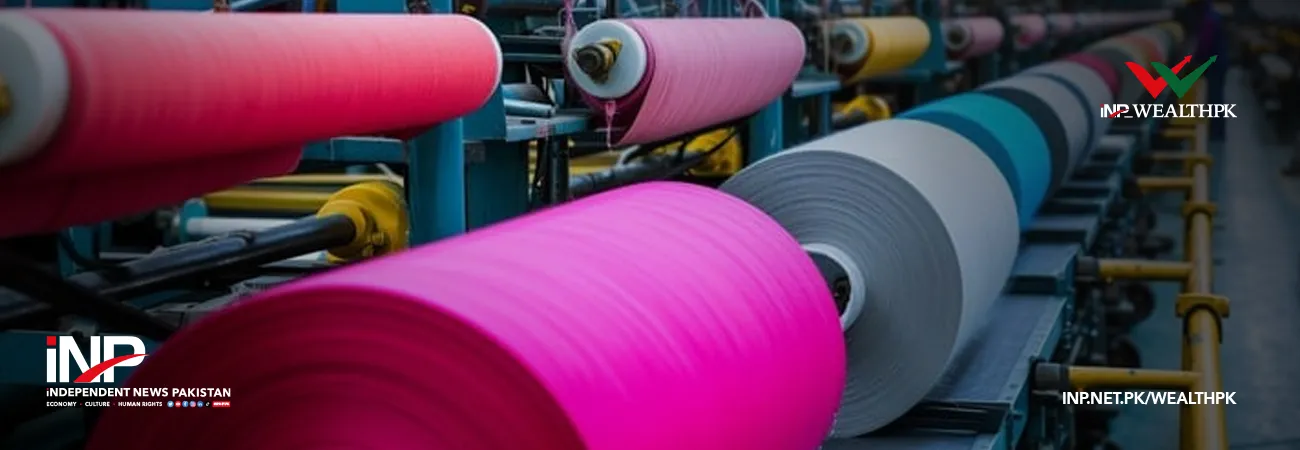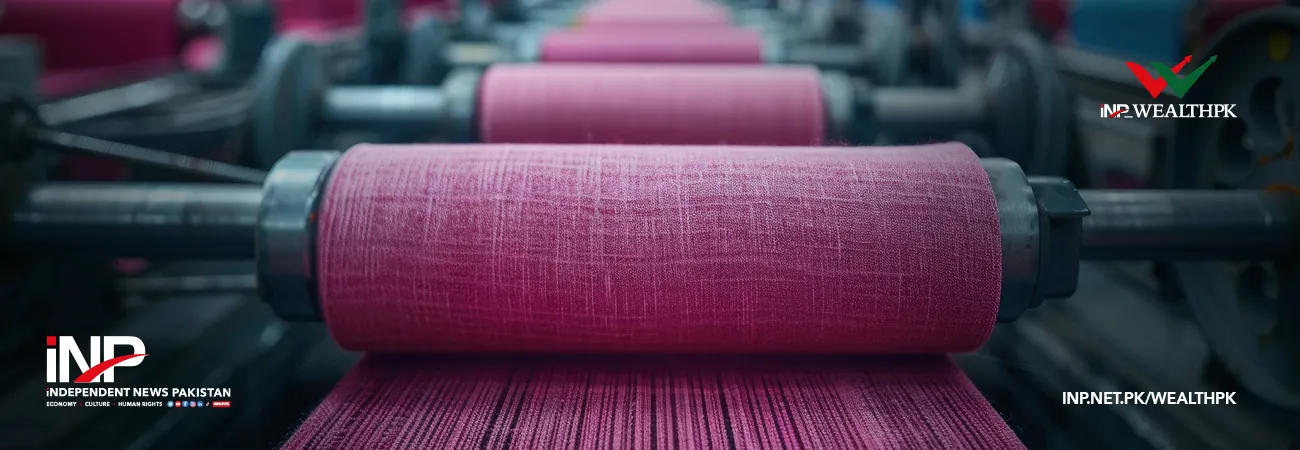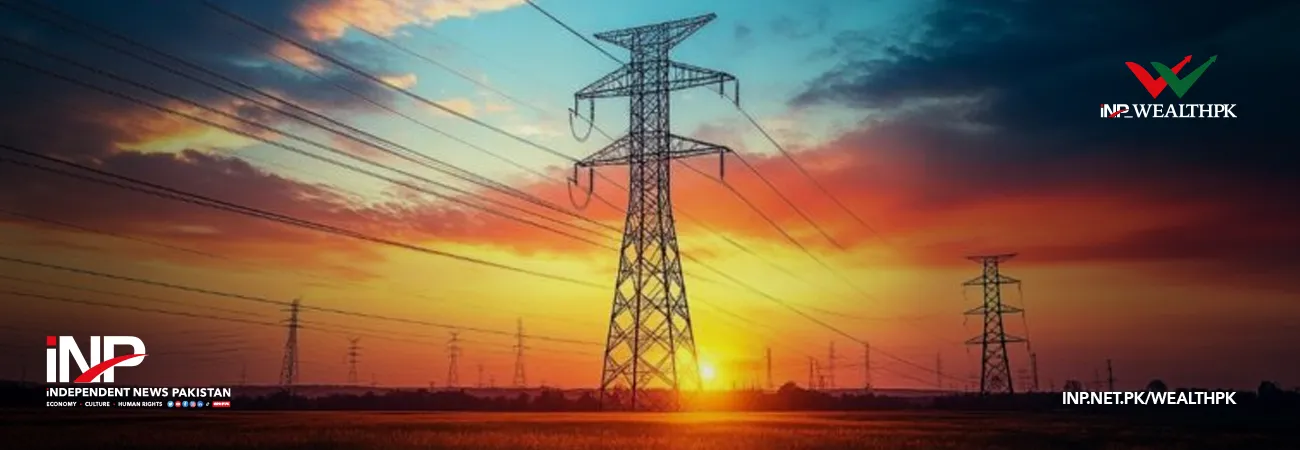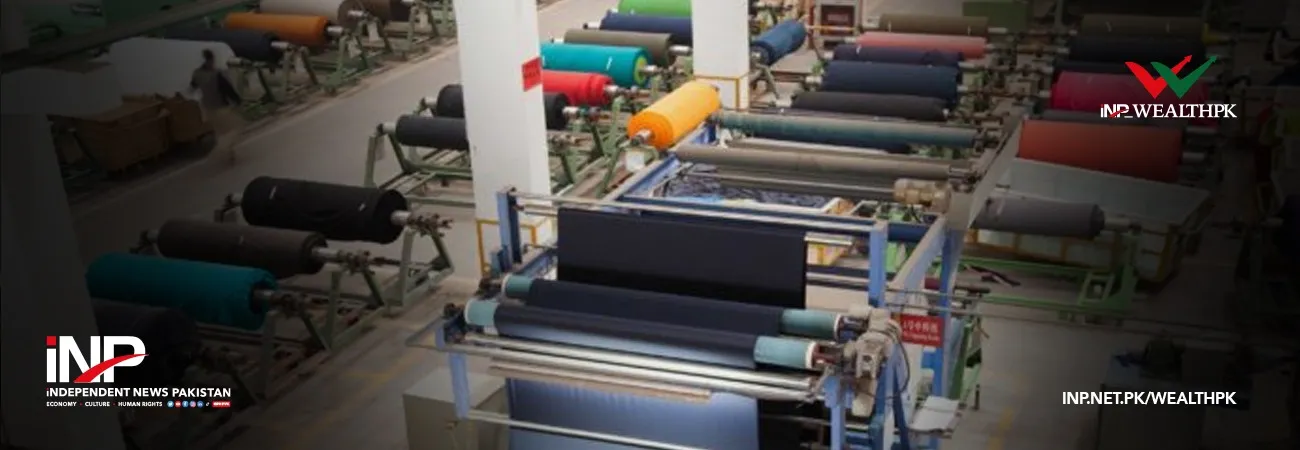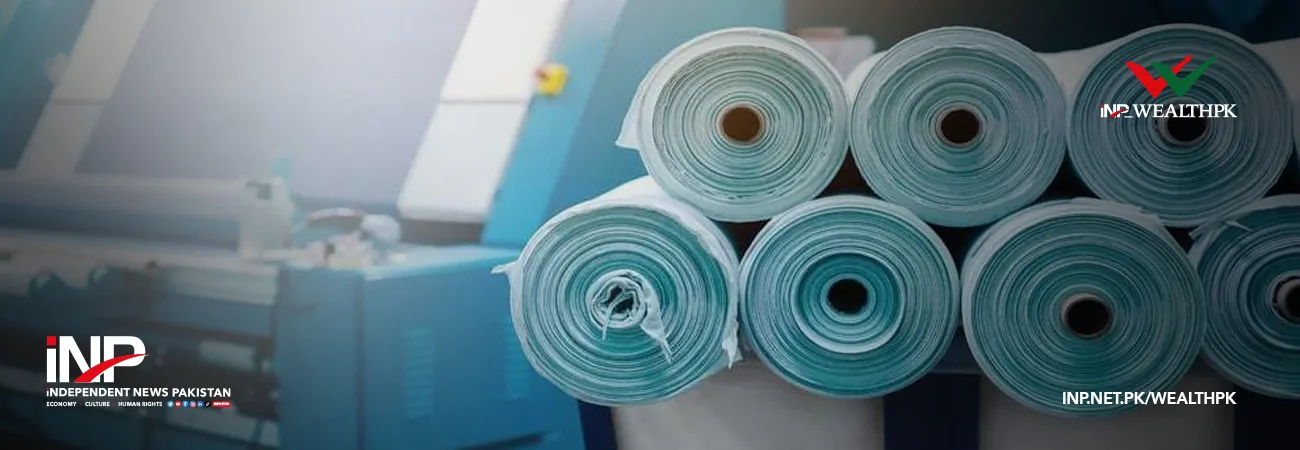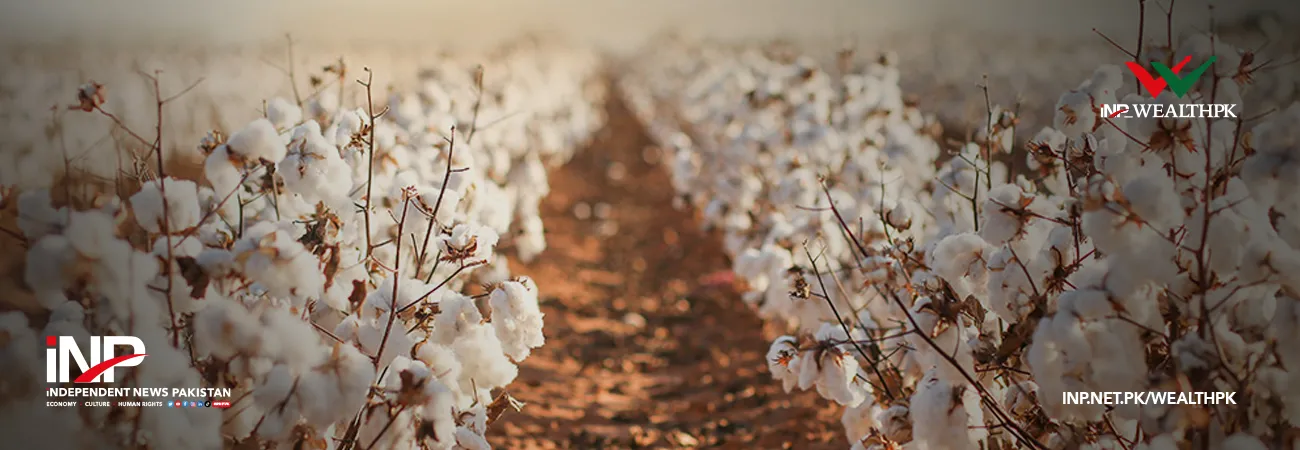INP-WealthPk
Ayesha Saba
The government plans to expand credit facilities, export insurance, and green financing mechanisms to strengthen the textile and apparel sector’s access to capital and promote sustainable industrial growth. The measures are part of the draft Textile and Apparel Policy 2025-30, which seeks to address long-standing financial constraints faced by manufacturers and exporters while encouraging investment in cleaner and more energy-efficient technologies.
According to the draft Textile and Apparel Policy 2025–30 available with Wealth Pakistan, the textile industry faces liquidity challenges due to high borrowing costs, delayed payments, and limited access to affordable credit. The policy emphasizes that access to competitive financing and insurance coverage is crucial for sustaining production, promoting exports, and enhancing resilience against global market fluctuations.
The document proposes strengthening and expanding the Export Finance Scheme (EFS) and the Long-Term Financing Facility (LTFF) to provide cost-effective funding for working capital, machinery acquisition, and technological upgrades. These facilities will continue under revised structures to ensure greater inclusion of small and medium-sized enterprises. To enhance export financing support, the draft policy calls for greater engagement of the Export-Import Bank of Pakistan (EXIM Bank).
The bank will provide credit insurance, trade finance, and export guarantees to reduce risk for exporters and encourage commercial banks to extend more financing to the sector. It will also facilitate supplier and buyer credit arrangements to help exporters expand operations in international markets. The document highlights the importance of improving liquidity management through timely refund payments and simplified taxation processes.
It recommends close coordination between the Ministry of Commerce, the Federal Board of Revenue, and the State Bank of Pakistan to ensure exporters receive prompt reimbursements under the duty drawback and sales tax refund schemes. In addition to traditional export financing tools, the policy focuses on promoting green and sustainable financing. The State Bank of Pakistan, in collaboration with stakeholders, will develop sustainability-linked loan products and concessional credit lines for projects promoting energy efficiency, renewable energy adoption, and waste reduction.
These instruments aim to help industries transition toward environmentally responsible practices and lower production costs through cleaner technologies. The policy also refers to the introduction of a National Green Taxonomy, which will guide commercial banks and investors in channeling capital toward climate-friendly projects. This initiative is expected to align the textile and apparel sector with global sustainability standards and international commitments under the Sustainable Development Goals and the Paris Agreement.
The draft policy further suggests leveraging donor-backed programs and multilateral partnerships to expand funding for energy and water efficiency projects. The Ministry of Climate Change and the Ministry of Commerce will work with international development agencies to attract concessional financing and technical assistance for sustainable industrial modernization.
Recognizing the need for greater financial literacy, the policy calls for training programs to help textile entrepreneurs, especially small-scale manufacturers, understand and utilize available credit, insurance, and green finance facilities. Enhanced awareness and institutional collaboration will enable firms to manage financial risks more effectively and access innovative financing opportunities.
The document concludes that expanding access to credit, export insurance, and sustainable financing will strengthen Pakistan’s textile sector and promote investment in modernization and resource efficiency. It underscores that a well-supported financial ecosystem is critical for maintaining competitiveness, managing risks, and contributing to the country’s broader goals of export-led and environmentally responsible economic growth.

Credit: INP-WealthPk




